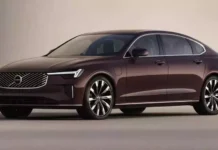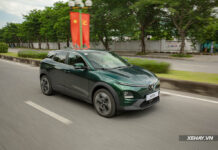
|
The Chinese automotive industry has faced significant challenges in the US market due to tariff barriers. However, in neighboring markets, Chinese-made vehicles are attracting a large number of customers. According to Carscoops, China is now the world’s leading exporter of passenger cars, surpassing Japan and Germany.
Last year, China successfully exported 4.7 million vehicles, triple the number from 2021, indicating the rapid growth of the Chinese automotive industry. Chinese automakers are quickly expanding their reach by exporting to new markets. This expansion is driven by the stagnation of the domestic market.
According to calculations by Carscoops, Chinese automakers are facing a serious issue of “excess capacity.” If their factories operated at full capacity, they could produce nearly 45 million vehicles per year. However, actual production and consumption levels are only around 60%.
|
|
|
Chinese automakers are continuously building factories at home and abroad. Image: Chery. |
Despite the surplus of vehicles in the domestic market, Chinese automakers are determined to expand their reach by building factories in neighboring countries. BYD has completed factories in Uzbekistan and Thailand and is planning to build more in Brazil, Hungary, Turkey, and Mexico. Chery, Great Wall Motors, SAIC, and Changan are also pursuing similar strategies.
With high tariffs and intense competition from established brands, Chinese vehicles have not yet made significant inroads into North America, while excess inventory from domestic and overseas factories remains a challenge. To address this, Chinese automakers are shifting their focus to more promising markets, including the Middle East, Latin America, Africa, and Southeast Asia. Although purchasing power in these regions may not be as strong as in Europe or North America, the continuous growth of these countries makes them ideal targets for Chinese automakers.
According to The Economist, Chinese automakers have quickly captured market share, accounting for 8% in the Middle East and Africa, 6% in South Africa, and 4% in Southeast Asia, just a few years after their arrival.
Chinese vehicles are gradually penetrating various markets and putting pressure on established brands. If this trend continues, not only will longstanding automotive brands be affected, but the entire global automotive industry will need to adjust to the competitive wave from China.
Recommended Reads for Your Journey
Our Automotive section offers a diverse range of book suggestions with captivating topics. During your travels, there may be moments of relaxation, and a good book can be an engaging companion.
The Ultimate Spin: YangWang U9 Supercar Busted for ‘Bouncing’ on the Streets
Recently, a video went viral on social media featuring a rather unusual spectacle. It depicted a driver of a red YangWang U9 car coming to a halt in the middle of the road and proceeding to engage in a bizarre ‘bouncing’ routine, much to the bewilderment and frustration of other road users. The driver’s impromptu performance art was only curtailed when the police arrived on the scene, bringing an end to the curious episode.














































